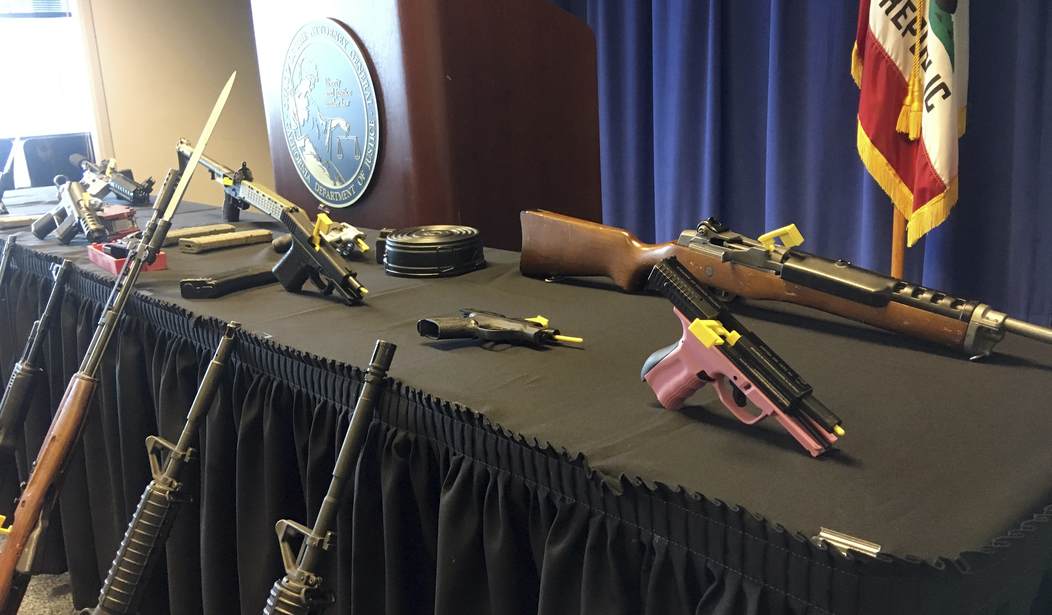One of the lesser known California gun control laws is its Armed and Prohibited Persons system; a statewide database of known prohibited persons who are believed to still have firearms in their possession. The law, which was put on the books about twenty years ago, is supposed to allow law enforcement to go out and take guns from those who aren’t allowed to have them. As the website CalMatters reports, however, that’s not what’s happening. Instead, the law appears to be an unmitigated disaster.
But what seemed at the time like a straight-forward approach to the enforcement of existing gun laws has instead become mired in chronic shortcomings, failing for years to make good on its potential. Successive administrations have vowed to fix the problems, but all have fallen short.
Today, the state is struggling to recover thousands of guns from people who have been ordered to surrender them. At the start of the year, the list compiled by the state Department of Justice had swelled to 24,000 individuals, the most ever. The pandemic only worsened the mounting backlog of cases when some state Justice Department agents were pulled from field enforcement.
“We are lucky to have a system that tells us this information,” said Julia Weber, a former supervising attorney for the state courts’ administration who now works on gun policy issues for the Giffords Law Center to Prevent Gun Violence. “But it’s disheartening. It’s a failure of the promise of the system.”
With all of the other failures of gun control, you’d think an anti-gun activist like Julia Weber would be used to the disappointment by now, but apparently not.
While the backlog of prohibited persons has grown to an all-time high, the failures of the system have been apparent for years. As California Rifle & Pistol Association President Chuck Michel outlined in 2019, under then-Attorney General Kamala Harris, the APPS program was plagued with issues.
In May of 2013, California Governor Jerry Brown signed controversial Senate Bill 140, giving the DOJ $24 million that had been collected from gun buyers to conduct background checks to enforce the DOJ’s existing APPS program.
At the time, Harris claimed this money would improve APPS enforcement, saying that,“California is leading the nation in a common-sense effort to protect public safety by taking guns away from dangerous, violent individuals who are prohibited by law from owning them . . . . These funds will allow the Department of Justice to increase the number of agents conducting these smart and effective operations. I commend Governor Brown for signing this critical public safety investment into law”.
But the 2013 Auditor’s report also found that the DOJ had failed to process reports of people becoming prohibited, potentially allowing them to keep illegally possessed firearms. The Auditor also said that the DOJ’s unit in DOJ’s Bureau of Firearms had not met its own internal deadline for completing initial reviews of potential armed prohibited persons.
This failure was attributed in part to “current weaknesses in Justice’s workload management and controls over information it receives.” As a result, according to the Audit, the DOJ reported “more than 20,800 persons were still deemed to be armed prohibited persons as of July 2013, and these persons had not had their firearms confiscated.”
California can’t even enforce the law barring prohibited persons from owning guns, but that doesn’t stop anti-gun lawmakers in Sacramento from proposing and enacting even more restrictions on legal gun owners every chance they get.
Compounding the failure, even when the APPS system is used to try to disarm prohibited persons, the database is so riddled with errors that, according to Michel, non-prohibited persons have had police come knocking on their door.
The 2015 [State Auditor’s] report identified errors in 20% of the APPS cases reviewed by the Auditor, including at least one case where a person was wrongly identified as a prohibited person in possession of a firearm, when in fact they were not prohibited.
These kinds of errors inevitably lead to law enforcement attempting to confiscate firearms from the homes of law-abiding citizens who are neither armed nor prohibited. According to the Auditor, when the DOJ makes this type of error, “it inappropriately infringes upon an individual’s right to own and possess firearms.”
Uh, yeah. But even individuals who have never owned firearms can find themselves in law enforcement’s crosshairs due to the mistakes and lack of supervision at the DOJ. Of course these errors also mean that dangerous persons, who are actually prohibited, are allowed to continue to possess firearms undetected, until they decide to use them.
The Auditor also found that the DOJ did not even have a checklist to assist the APPS unit staff in making correct prohibition determinations, or in reviewing and entering all pertinent information into the APPS database.
Tens of millions of dollars have been spent on this boondoggle, and the problems documented by the state’s auditor have only grown worse over the years. Vice President Kamala Harris and HHS Secretary Xavier Becerra, who both oversaw the APPS system when they served as Attorney General, did nothing during their tenure to address these issues or admit that the law is an unworkable mess.
“It’s very frustrating to see that we have such a hard time implementing firearms removals in situations where we have all the information in front of us,” said Weber of the Giffords Law Center. “It doesn’t give the public a lot of confidence in our ability to tackle a lot of these more complex firearm issues.”
You think? It’s also pretty telling that the gun control activist’s biggest concern is that the atrocious running of the APPS system will lead to more skepticism about gun control laws in general, and not with this specific failure.
Of course, given that this is California we’re talking about there’s little chance that the Democrats in charge will actually scuttle the APPS program. Instead, it’s far more likely that anti-gun politicians will try to make gun owners pay for another cash influx to the system with the promise that this time, things will be different.










